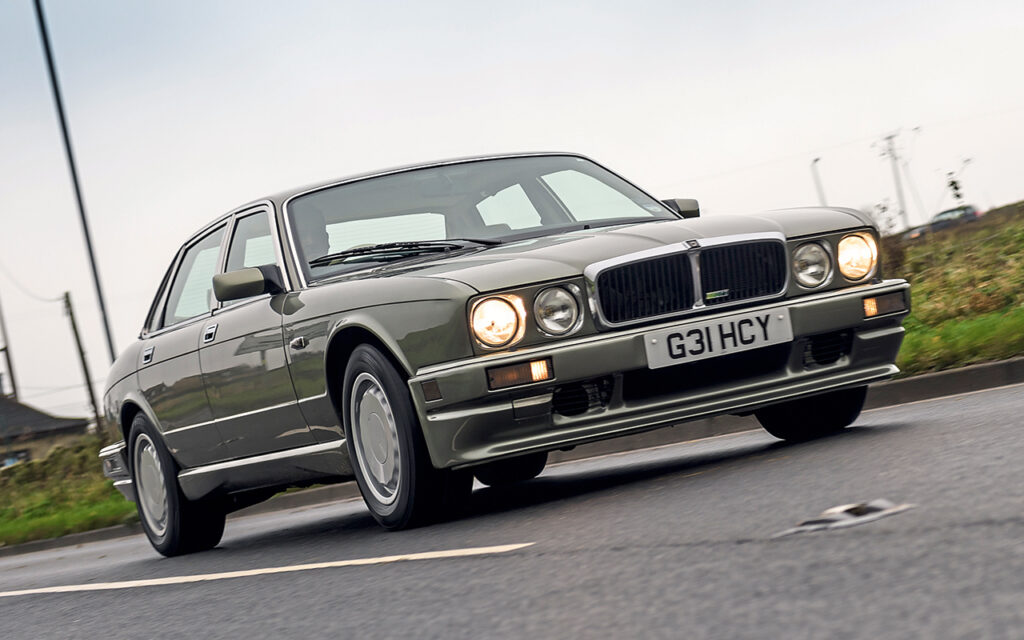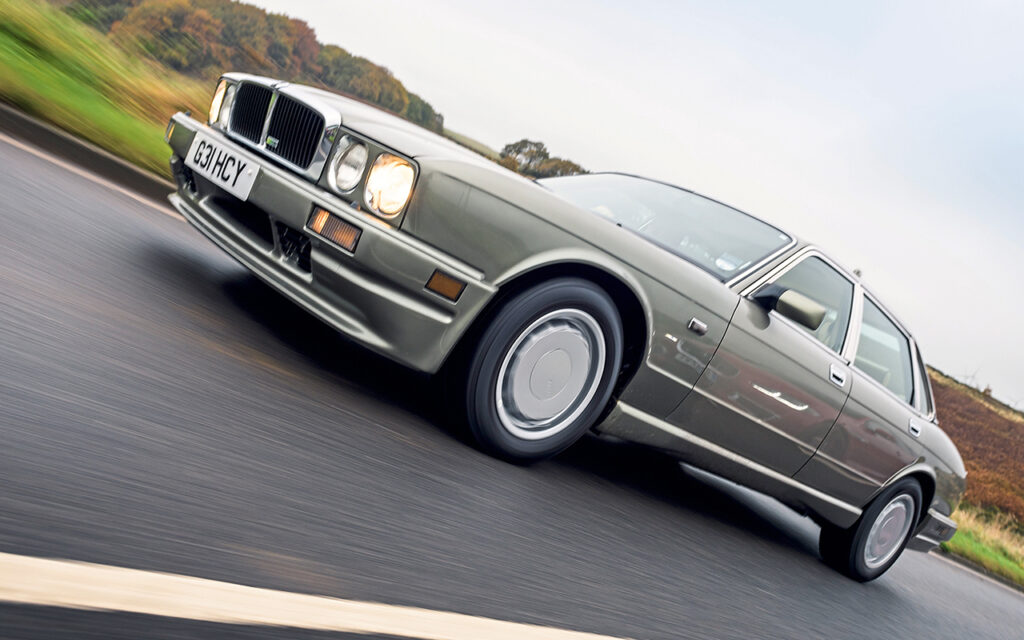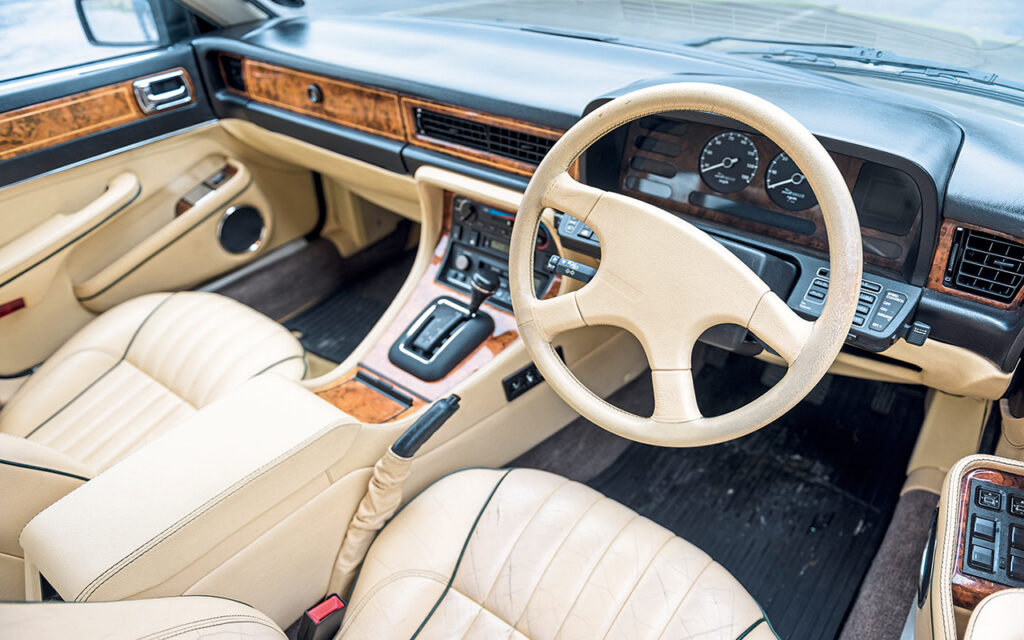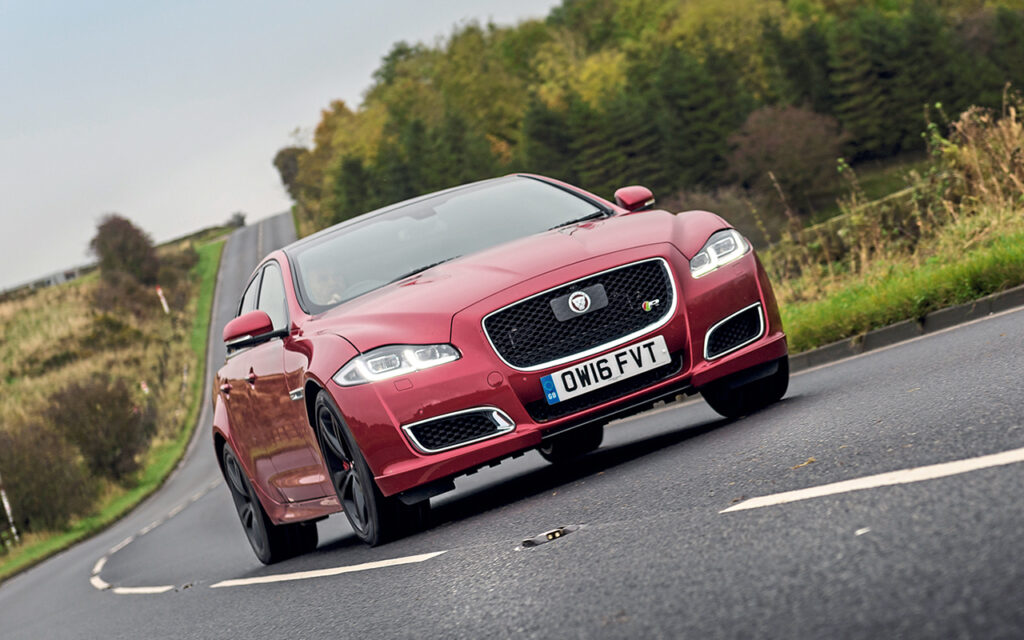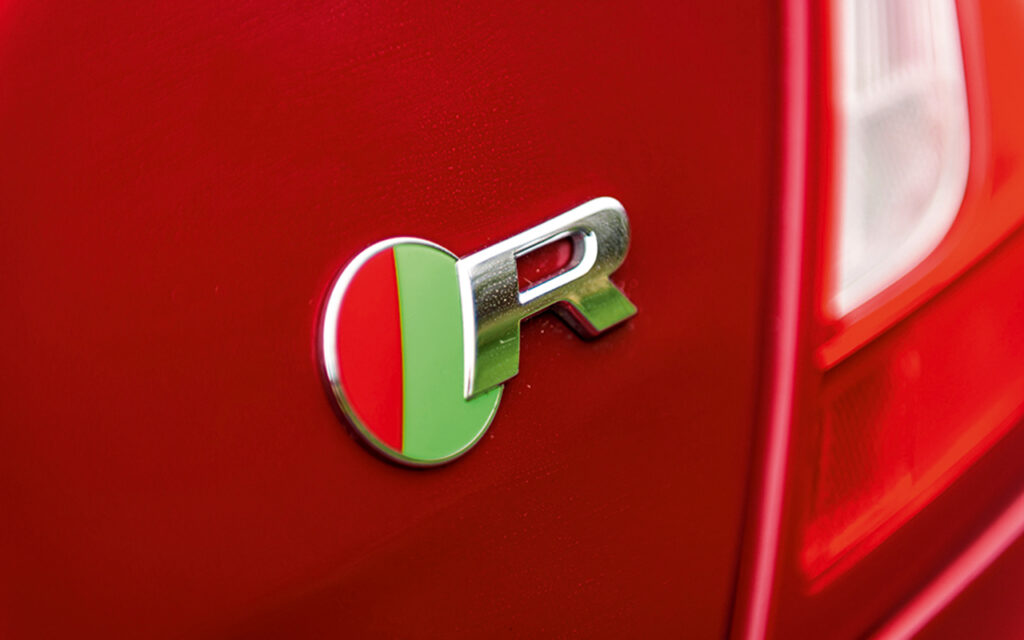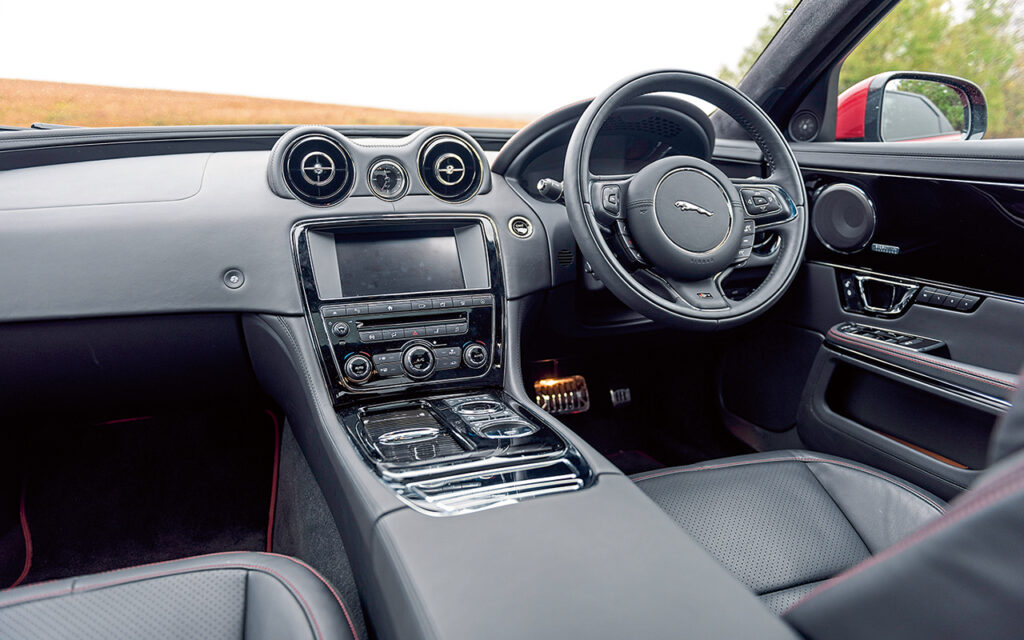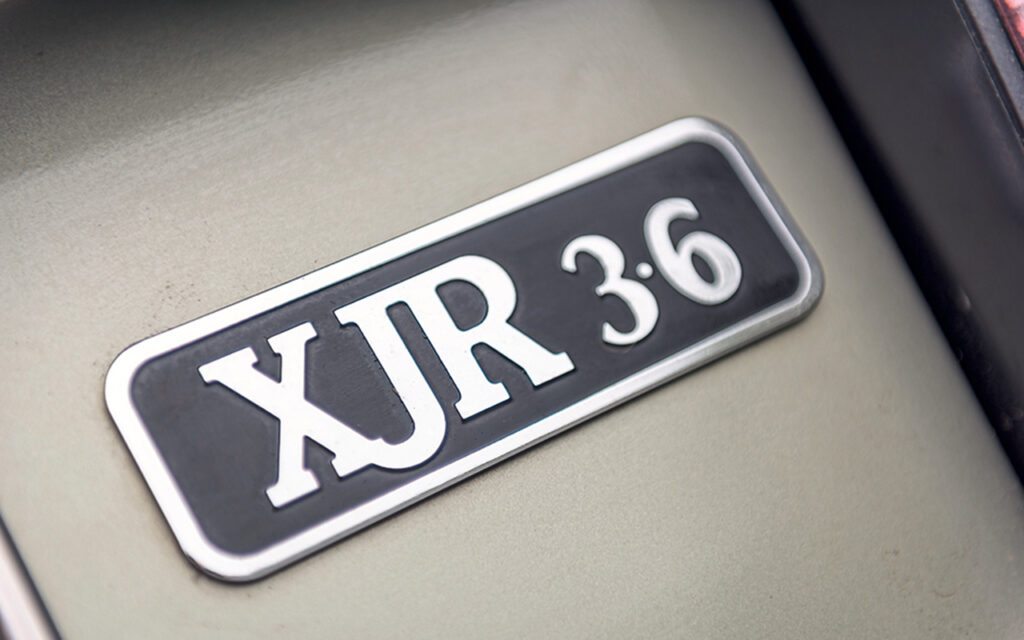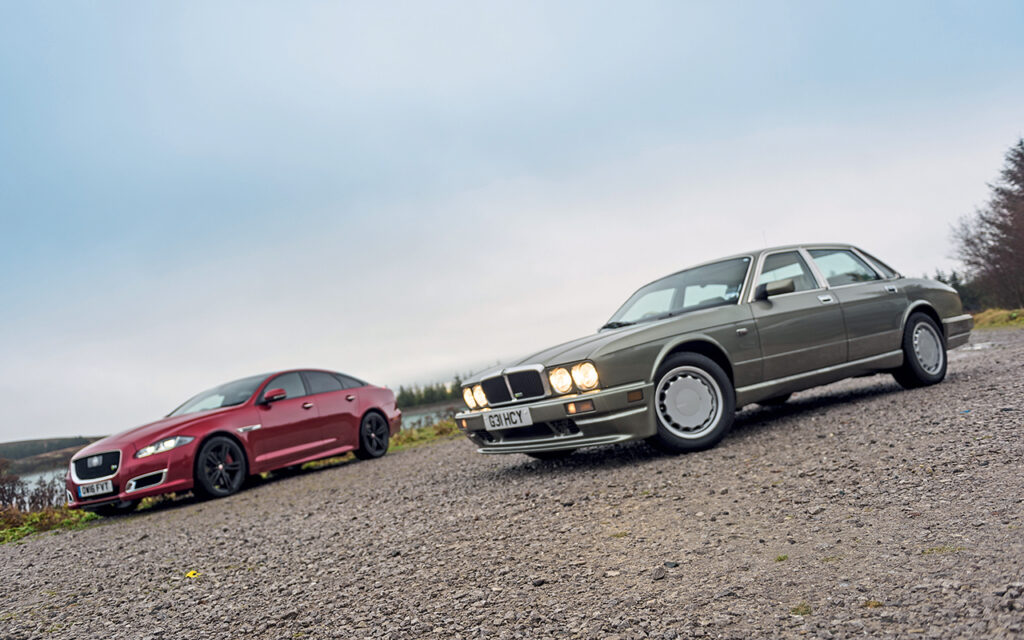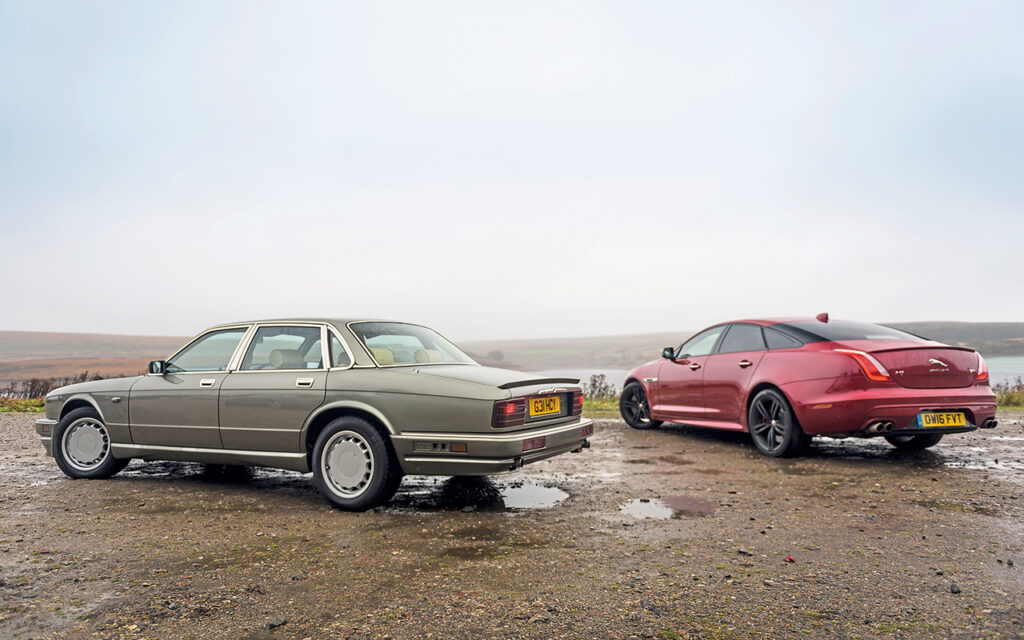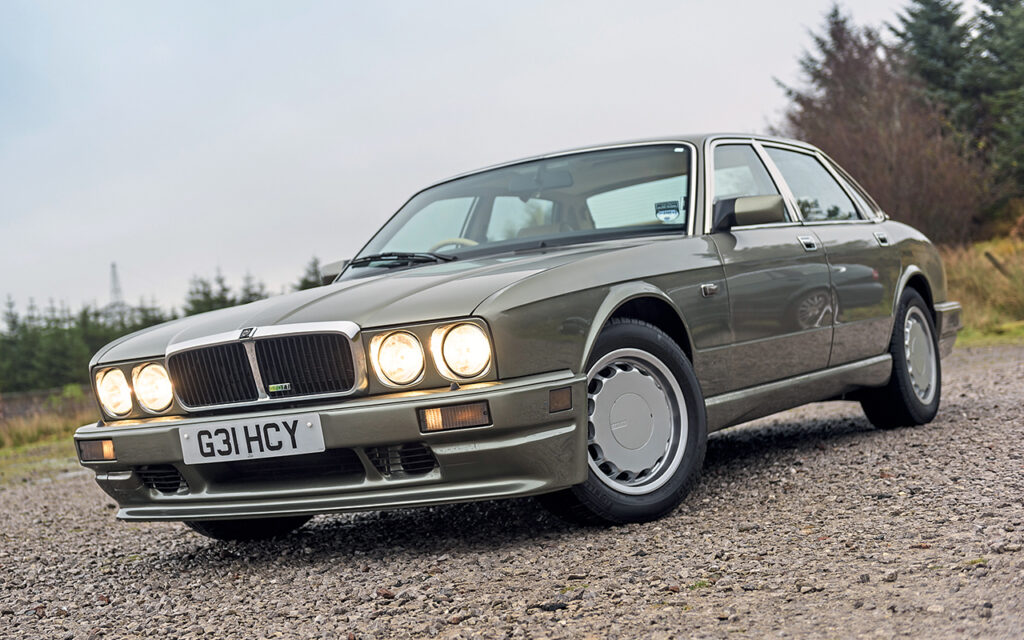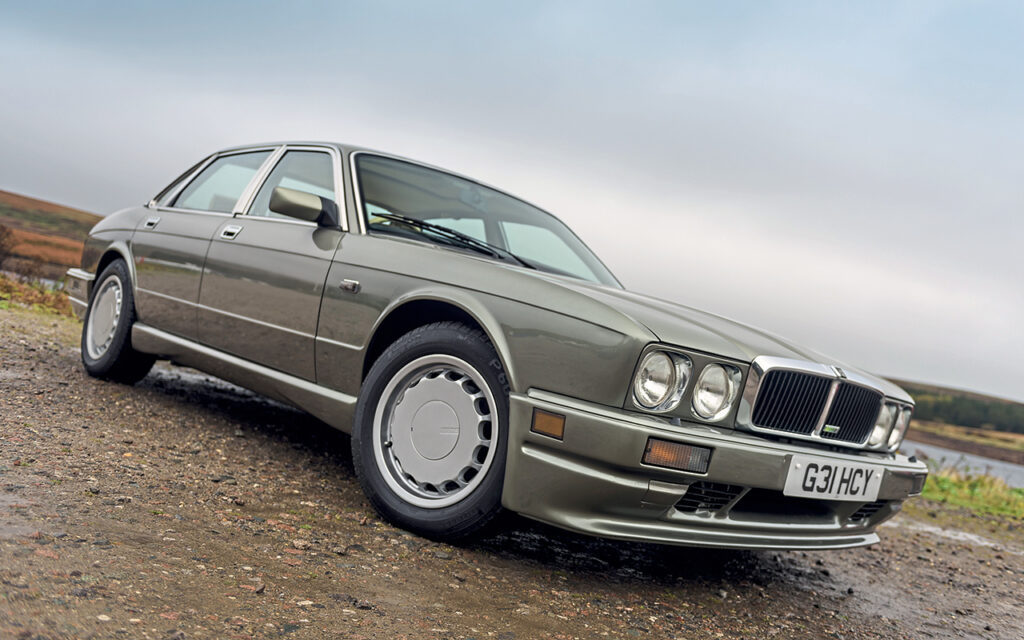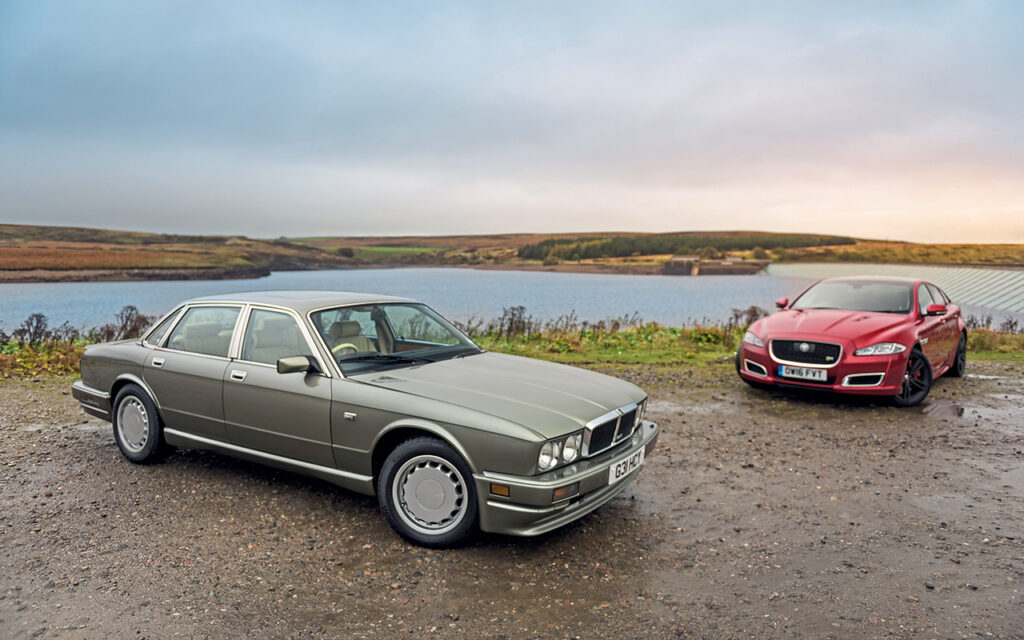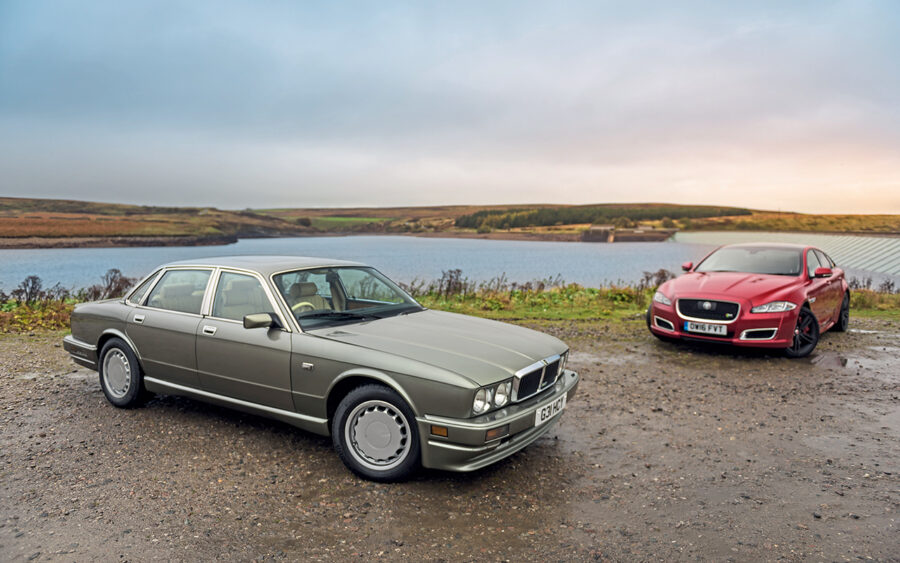We explore the similarities between the first and last cars to wear the Jaguar XJR nameplate. Which is the better bet today?
Words: Paul Walton
In the same way that it’s important for the British to be seen as having a stiff upper lip and the Swiss to be more neutral than a football referee, Jaguar is a manufacturer of both luxury and performance cars. For three decades, one model in particular was the face of both – the XJR. From the first in 1988 until the model was discontinued in 2019, its mixture of power, speed and comfort never changed. But, with the recent announcement that the next, all-electric generation of XJ has been cancelled close to reaching production, it means there’s no chance for an eighth, at least for the foreseeable future. So how does one of the first compare to one of the last?
The model originally arrived in the late 80s when Jaguar, wanting to have a younger, sportier audience, teamed up with TWR, the Tom Walkinshaw-led outfit behind the company’s successes in the European Touring Car Championship and World Sports Cars. Since the early 80s, TWR had been offering subtle aesthetic and handling upgrades to Jaguar’s cars under its own Jaguar Sport brand. Although built in tiny numbers, they still helped to give the XJ Series 3, XJ40 and XJ-S a sportier appeal, which didn’t go unnoticed by the company’s management. And so, in 1988, a new company – JaguarSport – that was owned 50/50 by the two concerns started to build cars using TWR’s existing upgrades.
The first to arrive was the XJ40 XJR, given the same name as the WSCC cars to further strengthen the link between the production models and Jaguar’s on-track successes. It was only built to order, and all XJRs were based on the top-spec 3.6 Sovereign, although they differed from the standard car by their aerodynamic body kit, matt black grille vents, handsome 16in Speedline alloys and, for a sportier look, the quad headlights of the entry XJ40. Little changed under the skin, just re-valved Bilstein dampers and a thicker anti-roll bar, the steering was re-valved, and a limited-slip diff’ was added to make it feel different.
With no modifications to the engine, the car was no faster than a standard 3.6, but it looked leaner and more focused. And so it should – an XJ40 XJR cost £13,500 more than a standard XJ6 3.6 Sovereign. One reason for the higher cost was the cars’ truncated production. Half-finished examples were transported from Browns Lane to TWR’s facility in Oxfordshire, for the body kit, wheels, interior and handling upgrades to be added.
Jaguar ended its association with Walkinshaw and, therefore, JaguarSport in the early Nineties when he tried to copyright the design of the TWR-built Aston Martin DB7, even though the car had started life as the XJ41 project. Consequently, all future XJRs would be developed in-house.
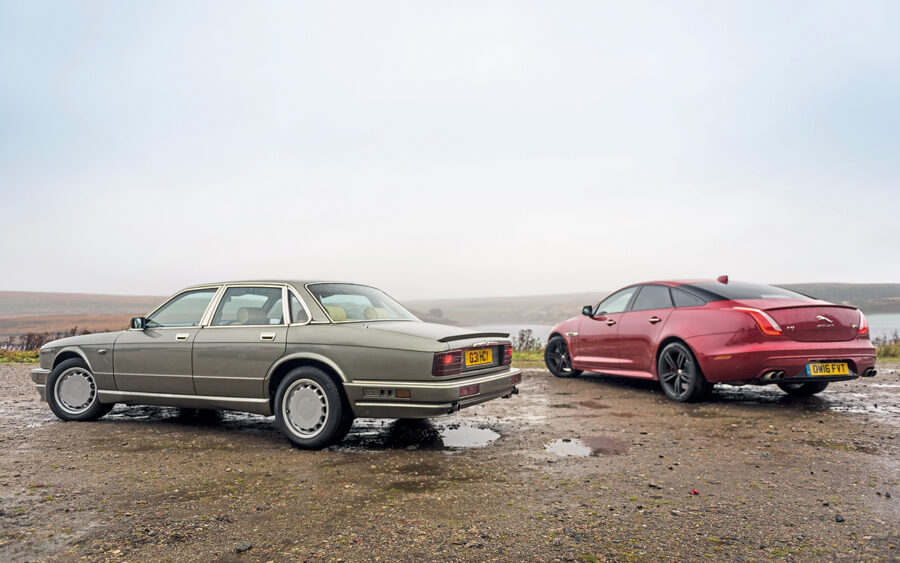
This rise in power ended with the X351-generation XJR. On sale from 2013 and replacing the existing 510PS (503bhp) Supersport model, it used the same 550PS (542bhp) 5.0-litre V8 as the then-current XFR-S, giving the car a genuine supercar performance: 60mph was reached in 4.4 seconds and the top speed was 184mph, figures close to TWR’s Group C cars of the 80s, putting it in a very different class than the asthmatic original. The 575PS (567bhp) version from 2017 pushed that even further. Although the performance figures were largely the same, it offered an even more frenetic performance.
You’d think, then, that the two cars here (a rare 3.6 from 1989 and a 2013 5.0) have little in common. Look closer, though, and you’ll notice they do share something: discretion. They might both have larger-than-standard wheels and a body kit, but neither draws too much attention to itself. While that’s the trend now, it wasn’t in the 80s. TWR could have easily added the huge Ford Sierra RS Cosworth-style rear wing that was de rigueur of the time. Thank goodness it didn’t.
I climb into the X351 first, its interior offering more black leather than a Hells Angels’ convention. A total lack of wood makes the car look and feel more contemporary than the XJ40, which still kept the veneer despite the younger market sought by the R-brand.
I press the starter button and the big V8 starts with a roar, a warning from the outset of the XJR’s potential to wreak havoc. Feeling brave, I bypass drive and twist the chrome circular rotary gear selector all the way round to sport mode. The engine will now rev for longer before the eight-speed automatic gearbox changes up and throttle response is sharper. I feel the benefit of this almost immediately – it requiring only the slightest touch of the throttle to make the car accelerate hard and with a viciousness that’s not only surprising for such a big car, but disconcerting, too. To experience this kind of performance you’d expect to need to strap yourself to a cruise missile, not be seated in the deep leather seats of a luxury limousine while listening to Radio 4.
With a tremendous 501lb ft of torque, the revs keep rising and rising until, with the engine reaching a noisy crescendo and, worried I’m going to bend a few valves, I pull on the left-hand steering wheel-paddle to change up. Not a particularly clever or smooth ‘box, the gears tend to bang into place with all the subtlety of a sawn-off shotgun.
The engine does sound great under acceleration, though, a deep, baritone growl that can be heard inside the cabin like thunder a few miles away. But, unlike the old F-Type R and XFR-S that both use the same 550PS engine and are so noisy you can feel yourself being judged as a boy-racer every time you go near the throttle pedal, the growl from the XJR is reasonably refrained.
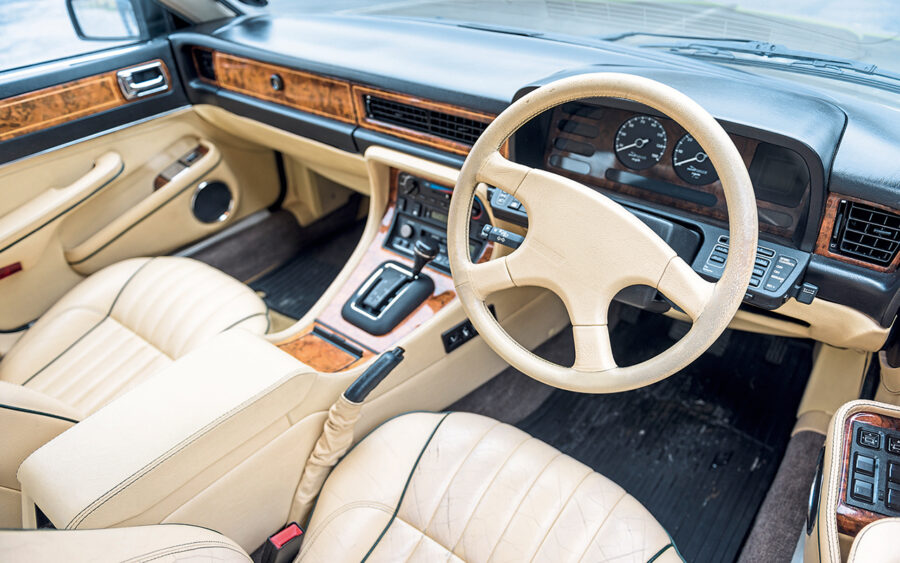
Despite its considerable size, the aluminium-bodied XJR can be hustled around corners with surprising agility. Weighing just 1,875kg, it handles like a car half its size with a sharpness the heavier-feeling steel-bodied X308 XJR lacks. This is also thanks to Jaguar’s Adaptive Dynamics system that actively controls vertical body movement, roll and pitch rates through the use of continuously variable dampers. The system monitors driver inputs and road conditions, adjusting damper rates in response up to 500 times a second to optimise stability and agility. The driver’s selection of dynamic mode offers enhanced body control by moving the damping rates to the firmer end of the available range. And finally, while the X351’s chassis, the same as the X350’s, might be so old that it was first seen on Ben-Hur’s chariot, the car remains composed no matter how hard I push it.
Fitted with the same valving developed for the F-Type, the XJR’s electric-assisted steering is perfectly weighted and precise, allowing me to carve through corners accurately. With enough torque to make the Earth spin in the opposite direction, and matched with the car’s superb handling, the XJR is a genuine sports saloon and could give an F-Type a run for its money in terms of excitement. But, look beyond the power, and the XJR is also a luxury limousine, boasting a supple suspension that won’t crash or bang through potholes, but instead glides over them with surprising gracefulness for such a hooligan.
By comparison, the 3.6-litre straight-six of the XJ40 XJR churns into life with little hesitation, settling down to a steady thrum. After pulling the gearlever down to drive, I squeeze the throttle pedal and…
Nothing. I push down a little harder, and only then does the car finally decide to move. Missing the instant urgency of the 5.0-litre, with 221bhp its progress is best described as steady rather than fast, 60mph being reached in a ponderous 7.4 seconds. That’s three slower than the newer model, and a lifetime in performance terms. Plus, it’s not the most responsive of engines, so whereas the 5.0 has lots of easily accessible torque always on tap, the XJ40 XJR needs to be permanently worked hard.
The steering is precise, though, and is quicker to react to my inputs than a standard ’40, while the stiffer suspension makes the car feel slightly more agile too, meaning corners can be taken a little faster. Not too fast, though, since there’s still considerable amounts of body roll and I want to hand this beautiful XJ40 XJR back in the condition I found it.
In terms of design, performance and driving experience, the two cars are as different as an all-electric I-Pace and a steam train. Yet, like all seven generations of XJR, as discreet, well-bred sports saloons, their images are identical.

